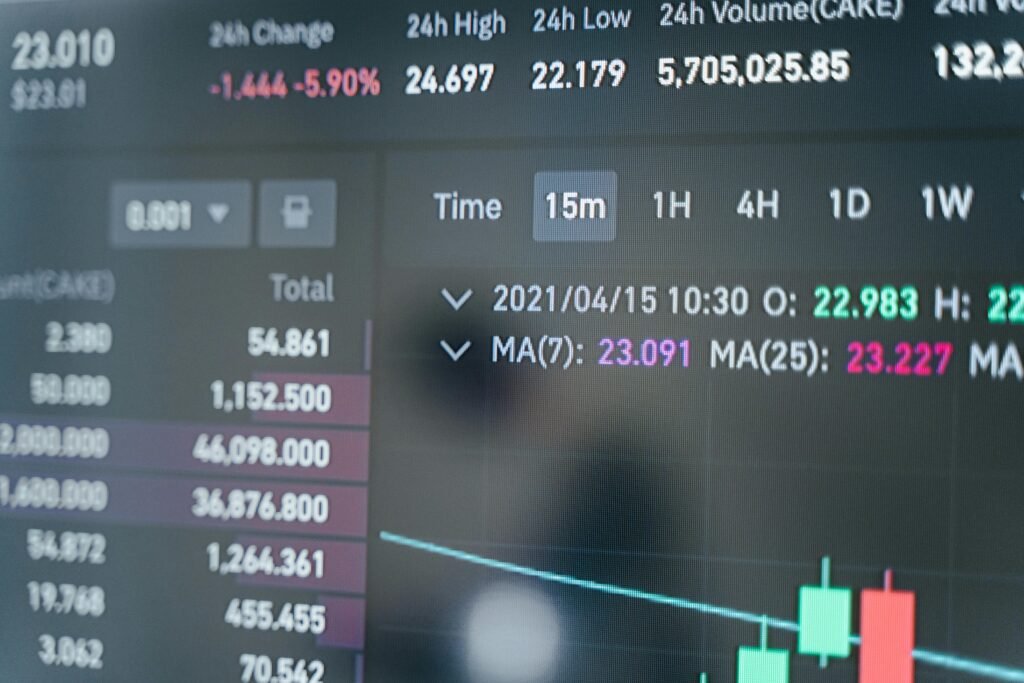
Introduction
Future of business 2025: As we advance towards 2025, the business world is poised for transformative change driven by technological advancements, evolving consumer behaviors, and global economic shifts. In this blog post, we will explore the key trends and innovations that are shaping the future of business, providing insights into how companies can adapt and thrive in an ever-changing landscape.

1. Technological Advancements
Artificial Intelligence (AI) and Machine Learning
Artificial intelligence and machine learning continue to revolutionize business operations. In 2025, AI-powered tools will be integral to decision-making, customer service, and operational efficiency. From predictive analytics optimizing supply chains to chatbots providing 24/7 customer support, AI will drive productivity and innovation. Companies leveraging AI will gain a competitive edge by improving accuracy and accelerating processes.
Blockchain Technology
Blockchain technology will play a crucial role in enhancing transparency, security, and efficiency across various industries. Businesses will leverage blockchain for secure transactions, supply chain management, and even voting systems. The decentralization of blockchain will enable new business models and disrupt traditional industries. Its applications will extend to areas such as healthcare for secure patient records and finance for transparent transactions.
Internet of Things (IoT)

The Internet of Things (IoT) will further integrate into daily business operations, creating smart environments that enhance productivity and efficiency. IoT devices will enable real-time data collection and analysis, leading to more informed decision-making and improved customer experiences. Industries such as manufacturing, logistics, and retail will benefit from IoT-driven automation and insights.https://mandeeleguide.com/profit-smarter/
2. Shifting Consumer Behaviors
E-commerce Dominance
E-commerce will continue to dominate the retail landscape in 2025, driven by convenience and personalized shopping experiences. Businesses will invest in advanced e-commerce platforms, augmented reality (AR) shopping experiences, and seamless payment solutions to meet evolving consumer expectations. Omnichannel strategies will become essential as consumers expect a consistent experience across all touchpoints.
Sustainability and Ethical Business Practices
Consumers are increasingly prioritizing sustainability and ethical practices. In 2025, businesses will adopt more sustainable practices, from eco-friendly packaging to reducing carbon footprints. Companies that demonstrate a commitment to social responsibility will gain a competitive edge. Transparency in sourcing and production will be key to building trust with environmentally conscious consumers
Personalized Customer Experiences
Personalization will be a key driver of customer loyalty in 2025. Businesses will use data analytics to offer tailored products and services, enhancing the overall customer experience. From personalized marketing campaigns to customized product recommendations, businesses will focus on creating meaningful connections with their customers. Advanced AI and machine learning algorithms will enable more precise targeting and personalization.
3. Global Economic Dynamics
Remote Work and Hybrid Models
The COVID-19 pandemic has accelerated the shift towards remote work, and this trend will continue in 2025. Businesses will adopt hybrid work models, offering employees the flexibility to work from home and in the office. This shift will require investments in digital collaboration tools and cybersecurity measures. Building a strong, inclusive, and engaging remote work culture will be crucial for attracting and retaining top talent.
Global Supply Chain Resilience
Global supply chains will become more resilient and adaptable to disruptions. Businesses will invest in supply chain diversification, local sourcing, and advanced logistics technologies. Ensuring supply chain resilience will be critical to maintaining business continuity and meeting consumer demand. Real-time tracking and predictive analytics will enhance supply chain visibility and responsiveness.
4. Innovations in Business Models
Subscription Services
Subscription-based business models will continue to grow in popularity. From streaming services to subscription boxes, businesses will offer convenient and personalized experiences to consumers. This model provides a steady revenue stream and fosters long-term customer relationships. Subscription models will expand to new industries, including healthcare and automotive.
Gig Economy Expansion
The gig economy will expand, offering flexible work opportunities for freelancers and independent contractors. Businesses will leverage gig workers to access specialized skills and scale their operations efficiently. Platforms connecting gig workers with businesses will see significant growth. Gig work will become more integrated into traditional business operations, providing agility and adaptability.
5. Health and Well-Being
Prioritizing Employee Health
The well-being of employees will be a top priority for businesses in 2025. Companies will invest in health and wellness programs, mental health support, and flexible work arrangements to promote a healthy work-life balance. Fostering a supportive and healthy work environment will enhance employee satisfaction and productivity. Well-being initiatives will include mental health resources, fitness programs, and work-life balance support.
Health Tech Innovations
The healthcare sector will see significant advancements in health tech, including telemedicine, wearable devices, and personalized medicine. Businesses in the health tech industry will leverage these innovations to improve patient care, enhance diagnostics, and reduce healthcare costs. Remote monitoring and AI-powered diagnostics will enable more proactive and personalized healthcare.
The Rise of Automation in 2025: Transforming Industries and Workforce Dynamics
Introduction
As we approach 2025, the rapid advancement of automation technologies is set to revolutionize industries and reshape the workforce. From artificial intelligence (AI) to robotic process automation (RPA), businesses are increasingly adopting automation to enhance efficiency, reduce costs, and drive innovation. In this blog post, we will explore the key trends, benefits, and implications of the rise of automation in 2025.

The Technological Advancements Driving Automation
Artificial Intelligence and Machine Learning
Artificial intelligence and machine learning are at the forefront of the automation revolution. These technologies enable machines to learn from data, make decisions, and perform complex tasks previously done by humans. In 2025, AI-powered tools will be integral to various business processes, from customer service chatbots to predictive analytics in supply chain management.
Robotic Process Automation (RPA)
Robotic process automation involves the use of software robots to automate repetitive and rule-based tasks. RPA is widely adopted in industries such as finance, healthcare, and manufacturing. By automating mundane tasks, RPA allows human workers to focus on more strategic and creative activities.
Internet of Things (IoT)
The Internet of Things (IoT) connects devices and sensors to collect and exchange data. In 2025, IoT-enabled automation will enhance operational efficiency, enable real-time monitoring, and improve decision-making. Industries such as logistics, agriculture, and smart cities will benefit from IoT-driven automation.
Benefits of Automation
Increased Efficiency and Productivity
Automation streamlines processes, reduces errors, and accelerates task completion. Businesses can achieve higher efficiency and productivity, leading to cost savings and improved profitability. Automation also allows for 24/7 operations, further enhancing productivity.
Cost Reduction
By automating repetitive tasks, businesses can significantly reduce labor costs. Automation also minimizes the risk of human errors, reducing costs associated with rework and rectification. In the long run, the initial investment in automation technologies can result in substantial cost savings.
Enhanced Accuracy and Consistency
Automation ensures that tasks are performed with a high degree of accuracy and consistency. This is particularly beneficial in industries where precision is critical, such as healthcare and manufacturing. Automated systems can consistently deliver quality outputs, reducing variability and improving reliability.
Innovation and Competitive Advantage
Automation frees up human workers to focus on innovation and strategic activities. Businesses that embrace automation can stay ahead of the competition by adopting new technologies and continuously improving their operations. Automation also enables faster adaptation to market changes and customer demands.
Workforce Implications
Job Displacement and Reskilling
The rise of automation raises concerns about job displacement as machines take over repetitive tasks. However, automation also creates opportunities for new job roles that require advanced skills and creativity. Workforce reskilling and upskilling programs will be essential to prepare employees for the changing job landscape. Governments and businesses will need to invest in training initiatives to ensure a smooth transition for workers.
Human-Machine Collaboration
In 2025, the focus will shift towards human-machine collaboration, where humans and machines work together to achieve optimal outcomes. Automation will handle routine tasks, while human workers contribute their problem-solving, creativity, and emotional intelligence. This collaborative approach will enhance overall productivity and innovation.
Industry-Specific Impact
Manufacturing

Automation in manufacturing will continue to advance with the integration of AI, robotics, and IoT. Smart factories will leverage real-time data to optimize production processes, reduce downtime, and improve product quality. Collaborative robots (cobots) will work alongside human workers, enhancing efficiency and safety.
Healthcare
Automation in healthcare will improve patient care, streamline administrative processes, and enhance diagnostics. AI-powered tools will assist in medical imaging, drug discovery, and personalized treatment plans. RPA will automate administrative tasks such as billing and appointment scheduling, allowing healthcare professionals to focus on patient care.
Finance
The finance industry will benefit from automation in areas such as fraud detection, risk assessment, and customer service. AI-driven analytics will provide insights for better decision-making, while RPA will automate routine processes like data entry and compliance checks. This will lead to faster and more accurate financial operations.
Conclusion
As we move towards 2025, businesses must adapt to the evolving trends and embrace innovation to stay competitive. By leveraging AI and automation, adopting blockchain technology, embracing remote and hybrid work models, prioritizing sustainability and ethical practices, driving digital transformation, and focusing on health and well-being, companies can navigate the future of commerce successfully. Staying ahead of these trends will enable businesses to thrive in an ever-changing market and create lasting value for their customers and stakeholders.
The rise of automation in 2025 will bring about transformative changes across industries, enhancing efficiency, reducing costs, and driving innovation. While automation presents challenges such as job displacement, it also offers opportunities for workforce reskilling and human-machine collaboration. Businesses that embrace automation and invest in training initiatives will be well-positioned to thrive in the future. As we move towards an increasingly automated world, it is crucial to balance technological advancements with human-centric approaches to achieve sustainable growth and success.



